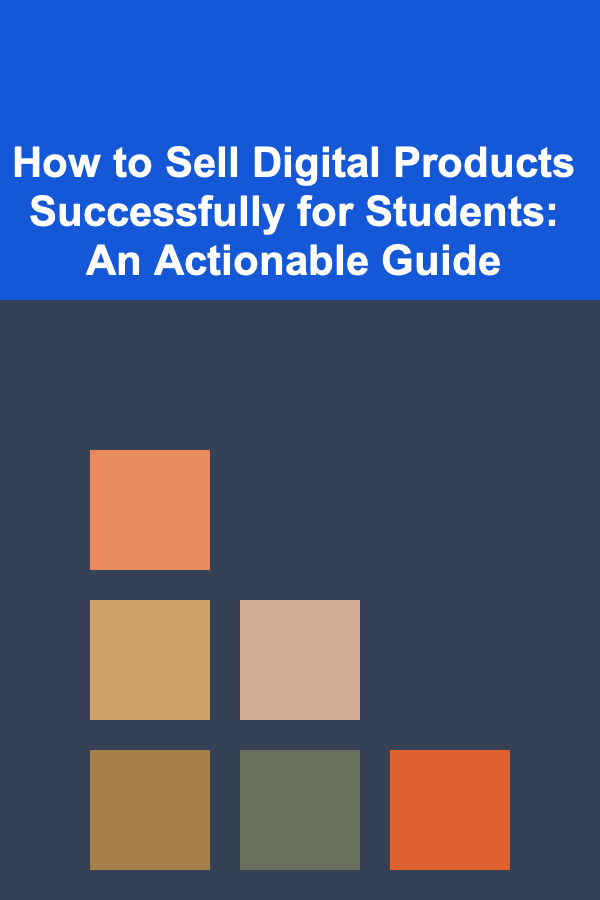
How to Craft Irresistible Headlines and Titles
ebook include PDF & Audio bundle (Micro Guide)
$12.99$11.99
Limited Time Offer! Order within the next:

In the digital age, where information overload reigns supreme, the ability to craft compelling headlines and titles is more crucial than ever. Your headline is often the first (and sometimes the only) impression you make on a potential reader. It's the gatekeeper that determines whether someone will click through to your article, watch your video, or even consider your product or service. A weak headline can condemn your content to oblivion, while a strong one can unlock a torrent of engagement and success. This article delves deep into the art and science of headline writing, providing actionable strategies and proven techniques to help you create titles that captivate, intrigue, and convert.
The Power of a Great Headline
Headlines serve a multi-faceted purpose. They are not merely labels; they are strategic tools that drive traffic, increase engagement, and ultimately, achieve your content goals. Here's a breakdown of their key functions:
- Grabbing Attention: In a sea of content, your headline must stand out. It's your initial hook, designed to stop readers in their tracks and pique their interest.
- Setting Expectations: A good headline accurately reflects the content that follows. It promises value and prepares the reader for what they are about to consume.
- Boosting SEO: Incorporating relevant keywords into your headline can significantly improve your search engine ranking, making your content more discoverable.
- Driving Click-Through Rates (CTR): Ultimately, the goal is to entice readers to click through and explore your content. A compelling headline dramatically increases your CTR.
- Enhancing Shareability: A well-crafted headline can make your content more shareable on social media. People are more likely to share content that they find interesting or valuable, and the headline plays a key role in conveying that.
Understanding Your Audience
Before you start brainstorming headline ideas, it's essential to understand your target audience. Who are you trying to reach? What are their interests, pain points, and aspirations? What language do they use? The more you know about your audience, the better equipped you'll be to craft headlines that resonate with them.
Consider the following questions:
- Demographics: Age, gender, location, education level, income, etc.
- Interests: What topics are they passionate about? What websites do they visit? What social media groups are they a part of?
- Pain Points: What problems are they trying to solve? What challenges are they facing?
- Aspirations: What are their goals and dreams? What do they want to achieve?
- Language: What kind of language do they use? Are they familiar with industry jargon? Do they prefer formal or informal tone?
By understanding your audience, you can tailor your headlines to their specific needs and desires, making them more likely to click and engage with your content.
Proven Headline Formulas and Techniques
While creativity is important, there are several proven headline formulas and techniques that you can leverage to create irresistible titles. These formulas provide a framework for crafting headlines that are both attention-grabbing and informative.
1. The "How To" Headline
"How to" headlines are incredibly popular because they offer practical advice and solutions to common problems. They promise to teach the reader something valuable and immediately demonstrate the benefit of clicking through.
Examples:
- How to Bake the Perfect Chocolate Chip Cookie
- How to Improve Your Public Speaking Skills
- How to Write a Compelling Blog Post
- How to Start a Successful Online Business
- How to Meditate for Beginners
When using the "How To" formula, be specific and focus on the end result. What will the reader be able to achieve after reading your content?
2. The List Headline
List headlines (also known as "listicles") are highly engaging because they promise organized, digestible information. People love lists because they are easy to scan and provide a clear outline of what to expect.
Examples:
- 10 Ways to Boost Your Productivity
- 5 Common Mistakes to Avoid When Investing
- 7 Must-Have Tools for Content Marketers
- 12 Tips for Traveling on a Budget
- 3 Reasons Why You Should Learn to Code
The number in the headline creates a sense of structure and completeness. Choose a number that is both intriguing and realistic. Odd numbers tend to perform slightly better than even numbers.
3. The Question Headline
Question headlines pique curiosity and invite the reader to seek answers. They engage the reader directly and encourage them to think about the topic at hand.
Examples:
- Are You Making These Common Marketing Mistakes?
- Want to Lose Weight Fast?
- Is Your Website Mobile-Friendly?
- Tired of Feeling Stressed?
- Ready to Take Your Career to the Next Level?
The key to a successful question headline is to ask a question that is relevant and relatable to your target audience. The answer should be easily found within your content.
4. The "Why" Headline
"Why" headlines tap into our innate desire to understand the reasons behind things. They promise to provide valuable insights and explanations.
Examples:
- Why Content Marketing Is Essential for Your Business
- Why You Should Start Investing Early
- Why Mindfulness Can Improve Your Well-being
- Why Teamwork Makes the Dream Work
- Why Failure Is a Necessary Step to Success
"Why" headlines are particularly effective when addressing complex or controversial topics. They offer a clear and concise explanation of the underlying reasons.
5. The "Secret" Headline
"Secret" headlines create a sense of exclusivity and intrigue. They suggest that the reader will gain access to insider knowledge or a hidden advantage.
Examples:
- The Secret to Writing Viral Content
- The Secret Weapon of Successful Entrepreneurs
- The Hidden Secret to Achieving Your Goals
- The Little-Known Secret to Building a Strong Brand
- The Secret to a Happy and Fulfilling Life
Be careful not to overuse the word "secret," as it can become cliché. Ensure that your content actually delivers on the promise of revealing something truly valuable.
6. The "Benefit-Driven" Headline
Benefit-driven headlines focus on the tangible benefits that the reader will receive from consuming your content. They highlight the value proposition and directly address the reader's needs.
Examples:
- Save Time and Money with These Simple Tips
- Increase Your Website Traffic by 50% in One Month
- Boost Your Confidence and Achieve Your Dreams
- Get More Done in Less Time with These Productivity Hacks
- Learn the Skills You Need to Succeed in Today's Job Market
Use strong action verbs and focus on the specific results that the reader can expect. Make the benefits clear, concise, and compelling.
7. The Negative Headline
Negative headlines, which highlight what not to do or what to avoid, can be surprisingly effective. They tap into our fear of making mistakes and our desire to avoid negative consequences.
Examples:
- 5 Mistakes That Are Killing Your Website Traffic
- Don't Make These Common Investing Errors
- Avoid These Deadly Presentation Sins
- Stop Wasting Time on These Ineffective Strategies
- Never Do These Things When Negotiating a Salary
Use negative keywords like "stop," "avoid," "don't," and "never" to create a sense of urgency and caution. Be sure to offer solutions and alternatives to the negative behaviors you highlight.
8. The Urgency Headline
Urgency headlines create a sense of immediacy and encourage readers to act quickly. They often use words like "now," "today," "limited time," and "last chance."
Examples:
- Get Your Free Ebook Today!
- Limited Time Offer: 50% Off All Products
- Learn This Skill Now Before It's Too Late
- Don't Miss Out on This Incredible Opportunity
- Act Now to Secure Your Spot at Our Exclusive Event
Use urgency headlines sparingly, as they can feel overly salesy if used too frequently. Make sure the offer is genuinely compelling and worth acting on immediately.
Headline Writing Best Practices
In addition to using specific formulas, there are several general best practices that can help you write more effective headlines.
- Keep it Concise: Aim for a headline length of around 60 characters (including spaces). This ensures that your headline is fully visible on search engine results pages (SERPs) and social media feeds.
- Use Strong Keywords: Incorporate relevant keywords into your headline to improve your SEO ranking. Use keyword research tools to identify the most effective keywords for your topic.
- Use Power Words: Power words are emotionally charged words that grab attention and evoke a strong response. Examples include "amazing," "proven," "guaranteed," "effortless," and "essential."
- Promise Value: Clearly communicate the value that the reader will receive from consuming your content. What will they learn? What problem will they solve?
- Be Specific: Avoid vague or generic headlines. Use specific numbers, data, and details to make your headline more compelling.
- Use Active Voice: Active voice is more direct and engaging than passive voice. For example, "Improve Your Writing Skills" is more effective than "Your Writing Skills Can Be Improved."
- Test and Iterate: Experiment with different headlines to see what works best. Use A/B testing to compare the performance of different headlines and identify the most effective ones.
- Match the Tone of Your Content: Make sure your headline accurately reflects the tone and style of your content. If your content is serious and informative, your headline should be as well. If your content is lighthearted and humorous, your headline can reflect that.
- Avoid Clickbait: While it's important to grab attention, avoid using misleading or sensationalized headlines that don't accurately reflect the content. Clickbait headlines can damage your credibility and lead to negative user experiences.
- Consider Different Platforms: Headlines that work well on one platform may not work as well on another. Tailor your headlines to the specific audience and format of each platform. For example, headlines for social media may need to be shorter and more attention-grabbing than headlines for blog posts.
Tools for Headline Writing
Several online tools can help you brainstorm headline ideas, analyze their effectiveness, and improve your overall headline writing skills.
- CoSchedule Headline Analyzer: This tool analyzes your headline based on factors like word balance, sentiment, and readability, providing a score and actionable suggestions for improvement.
- Sharethrough Headline Analyzer: Similar to CoSchedule, this tool analyzes your headline and provides a score based on its ability to attract attention and drive engagement.
- Portent's Content Idea Generator: This tool generates creative headline ideas based on keywords you provide.
- AnswerThePublic: This tool provides insights into the questions and concerns that people are searching for online, which can help you craft headlines that address their needs.
- Google Keyword Planner: This tool helps you identify the most relevant and effective keywords for your topic, which you can incorporate into your headlines.
Examples of Irresistible Headlines
Let's look at some examples of headlines that effectively utilize the techniques and formulas discussed above:
- "How to Write a Blog Post That Gets Shared 1,000 Times" (How To, Specific, Benefit-Driven)
- "10 Proven Strategies for Increasing Your Website Conversion Rate" (List, Proven, Benefit-Driven)
- "Are You Making These 7 Deadly Social Media Mistakes?" (Question, Negative, Specific)
- "Why You Should Start Investing in Cryptocurrency Today" (Why, Urgency, Benefit-Driven)
- "The Secret to Building a Loyal Customer Base" (Secret, Benefit-Driven)
- "Boost Your Productivity by 20% with These Simple Tips" (Benefit-Driven, Specific, Simple)
- "Don't Let These Common SEO Mistakes Ruin Your Website Ranking" (Negative, Specific, Benefit-Driven)
- "Last Chance: Get 70% Off Our Premium Courses!" (Urgency, Benefit-Driven)
- "The Ultimate Guide to Mastering Content Marketing" (Ultimate, Comprehensive, Benefit-Driven)
- "7 Ways to Make Your Content Irresistible (Even if You're Not a Writer)" (List, Benefit-Driven, Relatable)
The Importance of Testing and Iteration
Writing great headlines is an iterative process. Don't be afraid to experiment with different formulas, techniques, and keywords to see what resonates best with your audience. A/B testing is a powerful tool for comparing the performance of different headlines and identifying the most effective ones. Continuously analyze your results and refine your headline writing strategy based on the data you collect.
Here's how to approach A/B testing for headlines:
- Choose Two Headline Variations: Create two different headlines for the same piece of content. Focus on changing one key element at a time (e.g., the power word, the number in a list, or the overall tone).
- Use A/B Testing Tools: Many email marketing platforms, website analytics tools, and social media management platforms offer built-in A/B testing capabilities.
- Divide Your Audience: Randomly divide your audience into two groups. Show one headline to group A and the other headline to group B.
- Track Your Results: Monitor key metrics such as click-through rates (CTR), open rates (for email), and social media engagement.
- Analyze the Data: After a sufficient period (e.g., a week or a month), analyze the data to determine which headline performed better.
- Implement the Winning Headline: Use the winning headline for your content.
- Repeat the Process: Continuously test and iterate to optimize your headlines over time.
Conclusion: Mastering the Art of the Headline
Crafting irresistible headlines and titles is an essential skill for anyone who wants to succeed in the digital age. By understanding your audience, leveraging proven formulas, and following best practices, you can create headlines that capture attention, drive engagement, and ultimately, achieve your content goals. Remember to continuously test and iterate to refine your headline writing strategy and stay ahead of the curve. With practice and dedication, you can master the art of the headline and unlock the full potential of your content.

How to Build Robots for Art and Creative Expression
Read More
How to Clean Hard Water Stains from Shower Doors
Read More
How to Create a Fun and Functional Shared Workspace
Read More
How to Inspect and Maintain Your Home's Foundation
Read More
How to Sell Digital Products Successfully for Students: An Actionable Guide
Read More
How to Build a Greywater Recycling System
Read MoreOther Products

How to Build Robots for Art and Creative Expression
Read More
How to Clean Hard Water Stains from Shower Doors
Read More
How to Create a Fun and Functional Shared Workspace
Read More
How to Inspect and Maintain Your Home's Foundation
Read More
How to Sell Digital Products Successfully for Students: An Actionable Guide
Read More